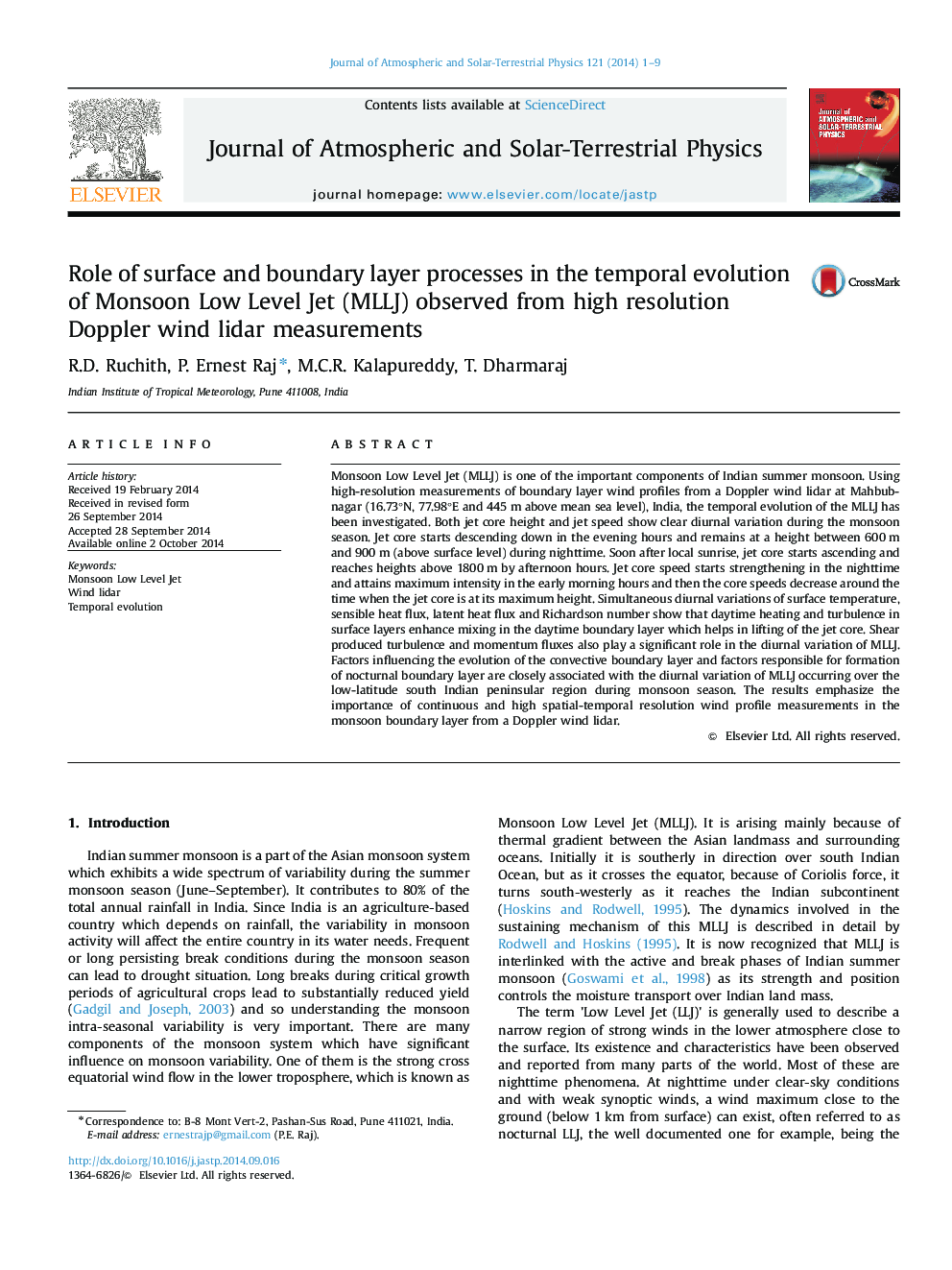| Article ID | Journal | Published Year | Pages | File Type |
|---|---|---|---|---|
| 1776469 | Journal of Atmospheric and Solar-Terrestrial Physics | 2014 | 9 Pages |
•High spatio-temporal resolution measurements of horizontal winds from Doppler wind lidar used to investigate features of Monsoon Low Level Jet (MLLJ).•Jet core height and jet speed show distinct diurnal oscillation during monsoon season.•Daytime heating and associated turbulence in surface layers enhance mixing and consequently turbulence and mixing processes below the LLJ are responsible for lifting of jet core.•Factors influencing the evolution of the Convective Boundary Layer seem to be closely associated with temporal evolution of LLJ.
Monsoon Low Level Jet (MLLJ) is one of the important components of Indian summer monsoon. Using high-resolution measurements of boundary layer wind profiles from a Doppler wind lidar at Mahbubnagar (16.73°N, 77.98°E and 445 m above mean sea level), India, the temporal evolution of the MLLJ has been investigated. Both jet core height and jet speed show clear diurnal variation during the monsoon season. Jet core starts descending down in the evening hours and remains at a height between 600 m and 900 m (above surface level) during nighttime. Soon after local sunrise, jet core starts ascending and reaches heights above 1800 m by afternoon hours. Jet core speed starts strengthening in the nighttime and attains maximum intensity in the early morning hours and then the core speeds decrease around the time when the jet core is at its maximum height. Simultaneous diurnal variations of surface temperature, sensible heat flux, latent heat flux and Richardson number show that daytime heating and turbulence in surface layers enhance mixing in the daytime boundary layer which helps in lifting of the jet core. Shear produced turbulence and momentum fluxes also play a significant role in the diurnal variation of MLLJ. Factors influencing the evolution of the convective boundary layer and factors responsible for formation of nocturnal boundary layer are closely associated with the diurnal variation of MLLJ occurring over the low-latitude south Indian peninsular region during monsoon season. The results emphasize the importance of continuous and high spatial-temporal resolution wind profile measurements in the monsoon boundary layer from a Doppler wind lidar.
